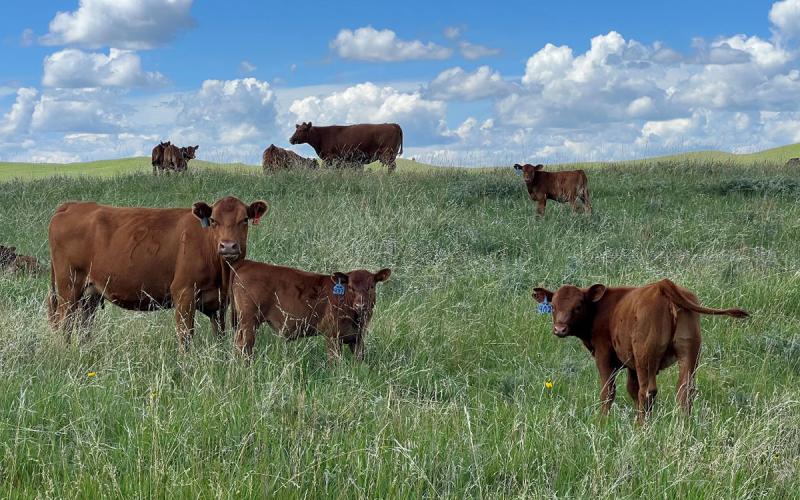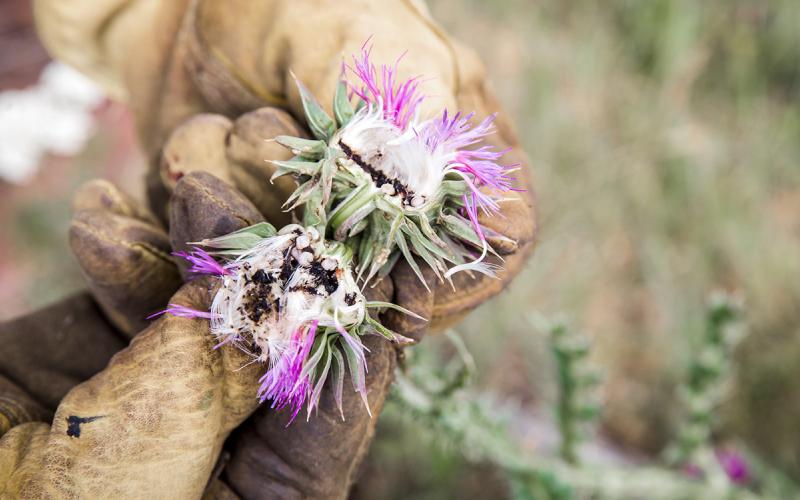Written collaboratively by Eric Jones, Philip Rozeboom, Jill Alms, and David Vos.
Leafy spurge is a difficult-to-control noxious weed in South Dakota. If no management tactics are utilized, leafy spurge can reduce the value and productivity of pasture and rangeland, and it can displace desirable vegetation and wildlife. Early summer and fall integrated management tactics are critical for leafy spurge management. Now is the time to consider implementing early summer management tactics for leafy spurge.
Herbicide Timing and Selection
Leafy spurge should be treated with herbicides at the yellow bract stage (Figure 1).
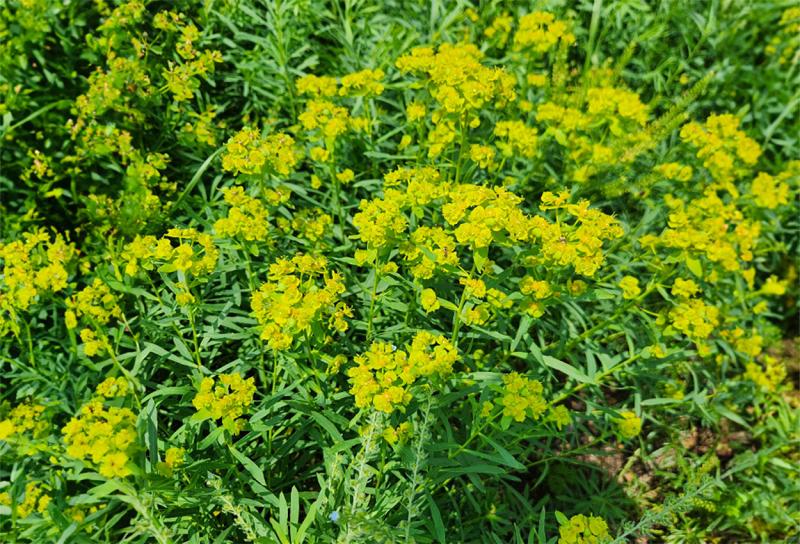
Once the plants begin to produce seed, herbicides are not as effective. Leafy spurge begins to produce seeds mid-July to early August, depending on the environmental conditions.
Effective herbicides for leafy spurge management in the spring include, but are not limited to, 2,4-D (Freelexx, Weedar, 2,4-D LV4/6, others), imazapic (Plateau), and picloram (Tordon). Applying one herbicide in the spring may require a follow-up herbicide application in the fall. Applying multiple herbicides can result in better leafy spurge control. Common tank mixes include 2,4-D + picloram (Grazon PD3 [premix] or other products tank mixed) and imazapic + saflufenacil (Detail).
Monitor treated areas to determine if plants survive the herbicide application. Mowing or an herbicide retreatment in the fall may be necessary. Since other weeds can inhabit areas where leafy spurge is present, be sure to use herbicide(s) that will have activity on all species present (Figure 2).
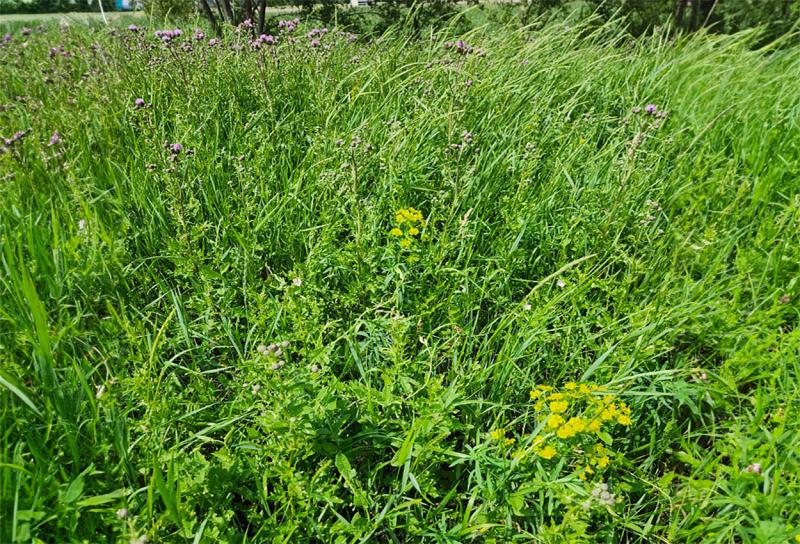
For example, aminopyralid (Milestone) is very effective on Canada thistle, but not leafy spurge; therefore, another herbicide needs to be applied. Refer to the latest SDSU Extension noxious weed control guide, as well as the SDSU Extension pasture and rangeland weed management guide for a complete list of herbicides.
Additional Management Tactics
While herbicides are effective, other non-chemical tactics can and should be utilized. Mowing can be a viable option to manage leafy spurge, but an herbicide application or another mowing event may be needed in the fall.
Rotational grazing can also help aid in the management of leafy spurge. Many weeds can colonize areas of intensive grazing. If an area of heavy leafy spurge is not grazed for an extended period, the grass or other desirable vegetation can compete with the weed. Additionally, livestock will occasionally graze on small leafy spurge plants.
Leafy spurge beetles are another organism that will feed on leafy spurge. The beetles are collected and released in areas of leafy spurge infestations. The areas where the beetles are released should be monitored to determine if the beetles have established and are feeding on the leafy spurge plants (Figure 3).
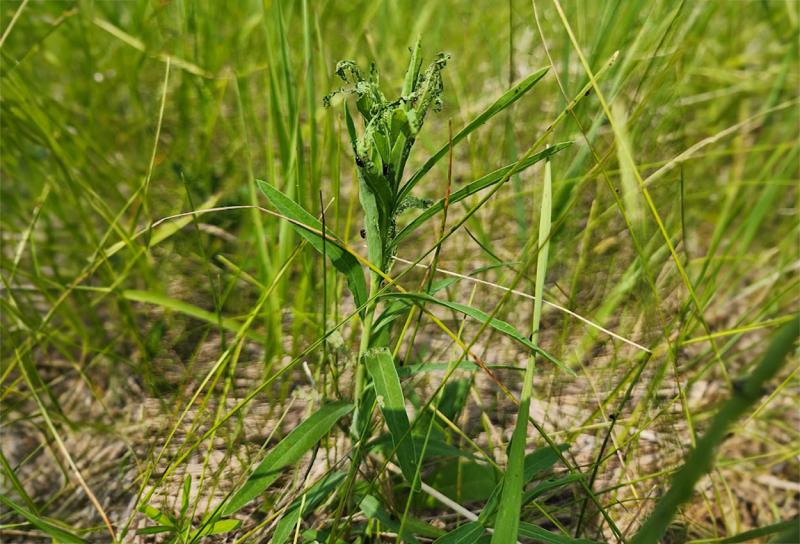
Releasing the leafy spurge beetles in areas that are not easily accessible (rough terrain, shelter belts, sensitive areas) is ideal. While not ideal for large patches of leafy spurge, smaller patches can be hand weeded.
In Summary
No one type of management tactic will effectively manage leafy spurge. Both chemical and non-chemical tactics should be utilized to increase the effectiveness of management. Despite what tactic is implemented this spring, make detailed notes on where the leafy spurge is present. Areas can be revisited in the fall to determine if a follow-up treatment is needed, or the areas can be revisited in the following spring to determine if the tactic previously implemented was effective. Possessing detailed notes can help increase the efficiency of leafy spurge management.
